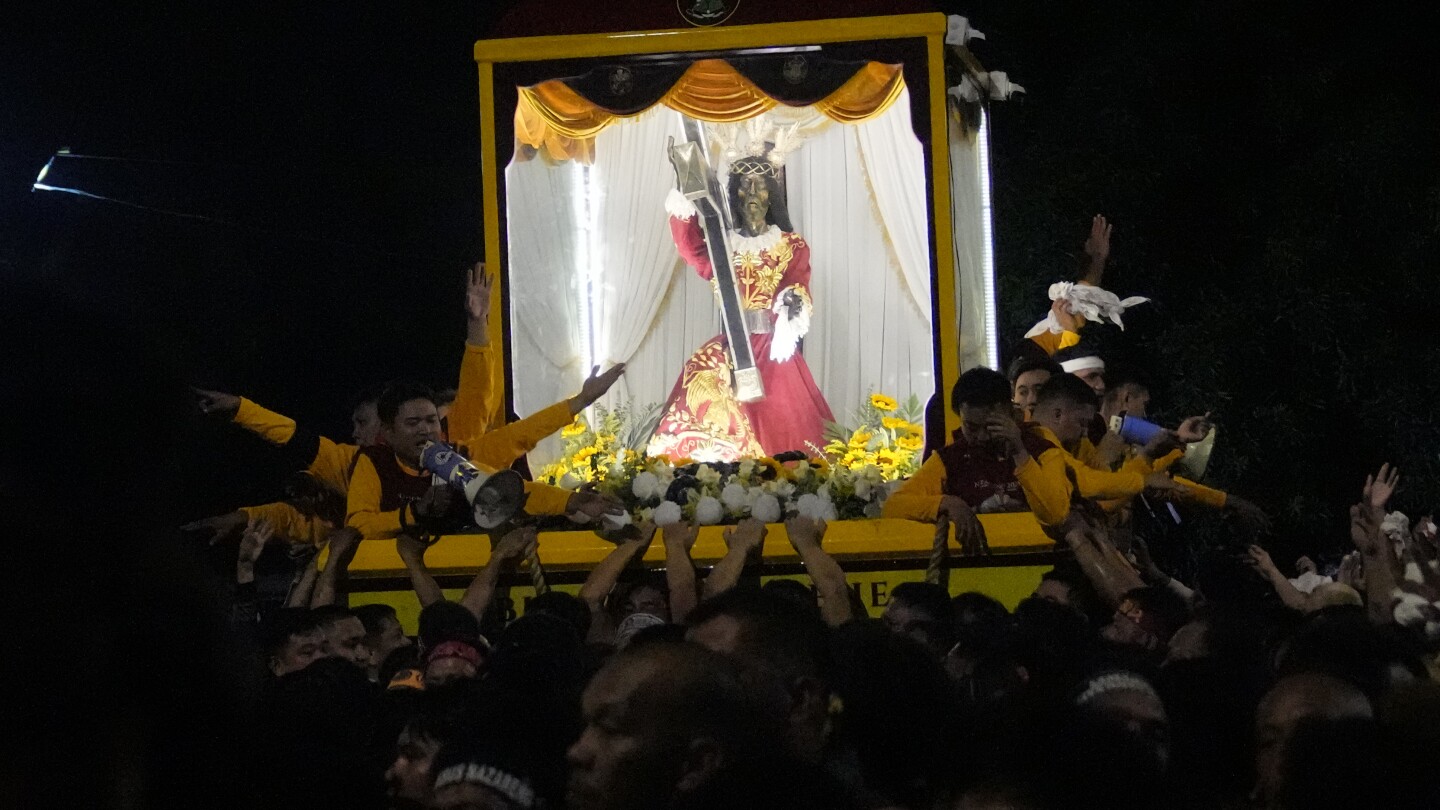MANILA, Philippines (AP) — A massive crowd of mostly barefoot Catholic worshippers marched Tuesday in an annual procession in the Philippines’ capital that paraded a centuries-old black statue of Jesus. Many said they were praying for peace in the Middle East, where tens of thousands of Filipinos work, as fears rise of a spread of the Israel-Hamas war, now in its fourth month.
Considered a major annual Catholic event in Asia, the procession was cancelled during the coronavirus pandemic and last year, after pandemic restrictions eased, the statue was not paraded to discourage larger crowds.
As the event got underway on Tuesday, the devotees — many in maroon shirts imprinted with the image of the Black Nazarene — swelled to more than 2 million, according to a police estimate.
Security was on high alert during the procession in Manila’s Quiapo district, following a Dec. 3 bombing that killed four people and wounded dozens of Catholic worshippers attending Mass at a university in the southern Philippines. President Ferdinand Marcos Jr. blamed “foreign terrorists” for the attack, which sparked a security alarm.
Thousands of police and plainclothes officers were deployed in Quiapo, along with drone surveillance and commandos positioned on rooftops along the route of the procession, which is expected to last till midnight. Police also closed off many roads nearby, blocked cell phone signals and banned people from carrying backpacks other than clear ones, as well as umbrellas and from wearing caps.
The procession typically draws massive numbers of largely poor Catholics who pray for the sick and a better life.
Two Filipino workers were killed in the Oct. 7 Hamas attack in southern Israel that triggered the latest war. Their slayings underscored the threats faced by foreign workers in Israel, where about 30,000 Filipinos work — many as caregivers looking after the ill, the elderly and those with disabilities. The remittances Filipino workers send back home from across the world has helped keep the Philippines’ fragile economy afloat.
“I’m praying for the war to end,” Rose Portallo, a 33-year-old mother of three, told The Associated Press on the sidelines of the procession. “I pity the many Filipinos who are there,” she said, adding that most of her relatives work in Dubai, in the United Arab Emirates.
Jeffrey Quilala, a 35-year-old cook in a Manila restaurant whose cousin works in Kuwait, said he was worried that a protracted Mideast conflict could affect global oil prices, deepening the hardships of many poor Filipinos. He walked barefoot to join the procession and said he has participated in the religious event for 15 years.
The life-size statue known as the Black Nazarene and showing Jesus carrying the cross was brought in the 16th century from Mexico on a galleon in 1606 by Spanish missionaries. The ship that carried it caught fire, but the charred statue survived. Many devotees believe the statue’s endurance, from fires and earthquakes through the centuries and intense bombings during World War II, is a testament to its miraculous powers.
Cancer survivor and businesswoman Juliet Asañon, a longtime Black Nazarene devotee, believed her prayers to the Black Nazarene and Catholic saints helped her during her illness and treatment.
“I asked God for help,” she said. “I did not feel any pain. … He made it easy and He cured me.”
For the first time Tuesday, the statue was encased in glass to protect it from damage as the crowd pressed around the slow-moving carriage.
The spectacle reflects the unique brand of Catholicism, which includes folk superstitions, in Asia’s largest Catholic nation. Dozens of Filipinos have nailed themselves to crosses on Good Friday in another unusual tradition to emulate Christ’s suffering that draws huge crowds of worshippers and tourists each year.

